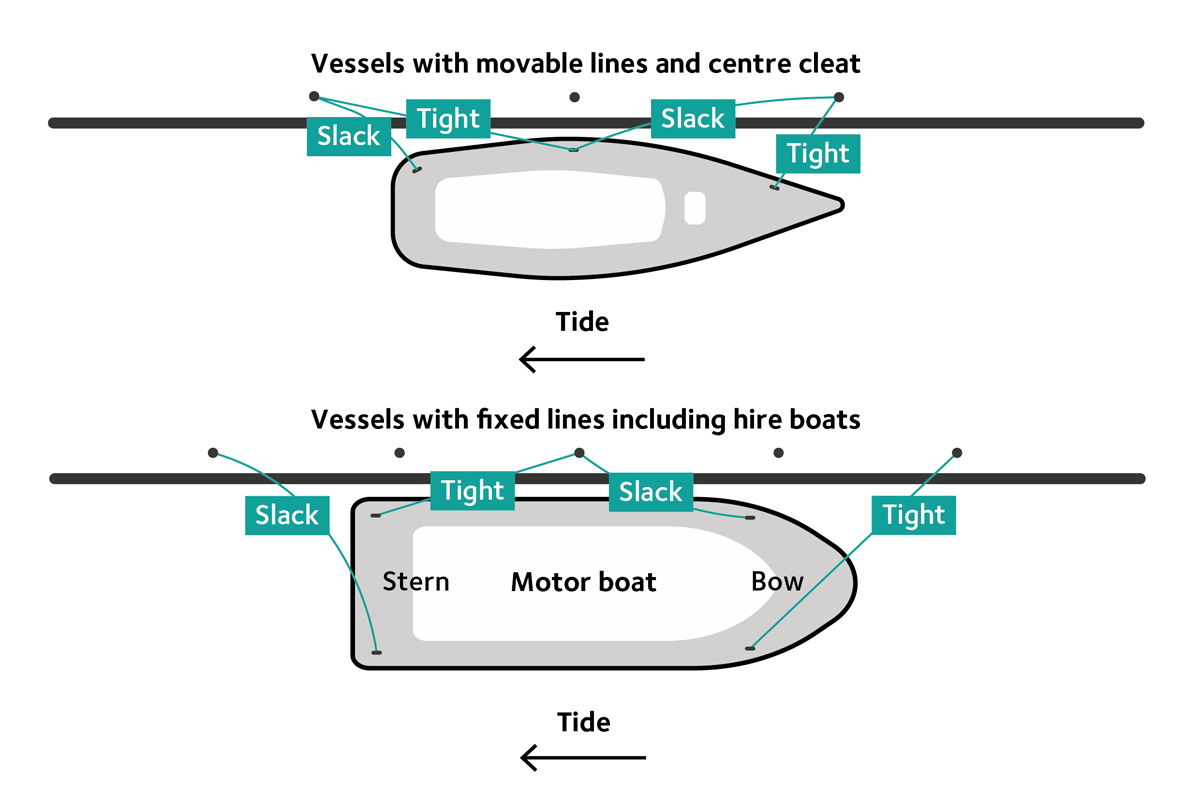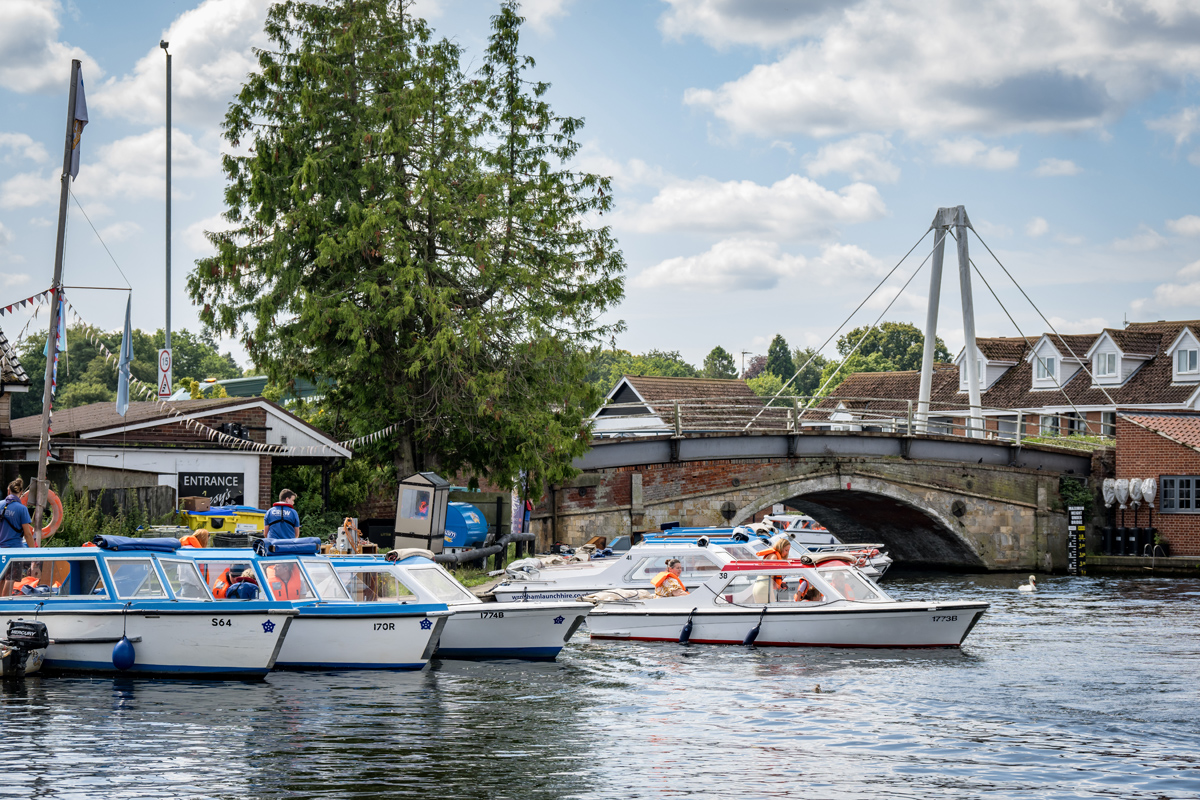Mooring up
Much like parking a car, practice makes perfect when it comes to mooring up your vessel in the tidal rivers of the Broads.
All of the Broads navigation is tidal because the rivers are directly connected to the sea. This means the flow of water can vary in direction and speed, and the distance between the water level and the top of moorings will change.
However mooring up in the gentler upper reaches of the rivers can be very different to the more tidal areas closer to Great Yarmouth, where the rivers combine to meet the sea. We recommend that you watch the safety videos produced by the Broads Authority and if you are considering mooring at or passing through Great Yarmouth or Reedham, telephone the Quay Rangers in advance on 07766 398238 / 01493 842794 for advice on availability of moorings and tidal conditions.
Approaching any mooring will require preparation. Following these simple steps will ensure you arrive or leave safely.
Mooring tips
Coming into a mooring
If coming into a mooring, follow these tips:
- The helm should ensure the crew know what is expected of them. The strongest members should be on deck and wearing lifejackets. Ropes should be prepared (not knotted or tangled).
- Make sure you know which way the tide is flowing at the mooring you are approaching and how fast the water is moving. You can look for any floating objects in the water to help you work this out. You may also need to consider the effect of wind on your vessel.
- Position the vessel against (going into) the flow of the water. You may need to turn the vessel around to do this. Careful use of the throttle will enable the vessel to remain stationary in relation to the mooring and once the back of the boat passes the selected mooring spot, gently ease the boat towards the bank.
- The bow (front) line should be taken ashore first or handed to the quay ranger. Once the bow line is secure the water flow will allow the back of the boat to settle against the mooring. The stern (back) line can now be secured. Once all lines are secured, turn off the engine.
- Never jump to the shore or attempt to push off the vessel from the mooring with your arms or legs. This could result in a serious injury.
- Remember to allow for the rise and fall of the tide when securing your boat. The tide can rise and fall up to 2 metres at Great Yarmouth. Mooring ropes should be long enough to allow for this. Additional ropes can be attached to the mooring to help hold the vessel alongside, as in the diagram below.

Leaving a mooring
- If you are at Great Yarmouth Yacht Station, Norwich Yacht Station or Reedham Quay, ask the Quay Rangers for help and guidance.
- Consider the direction and strength of the tidal flow and the effect of any wind.
- Brief the crew on their tasks and make sure all are wearing lifejackets and suitable footwear.
- Start the engine before untying any ropes.
- Remember, your vessel should travel into the flow of the water when leaving the mooring.
- If the water is flowing against the front of the boat, leave the bow (front) line secured until last. When ready to leave, untie the bow line and gently ease the boat forward. The flow will naturally take the boat away from the quay. Use the appropriate bow thruster if fitted.
- If the water is flowing against the back of the boat, leave the stern (back) line secured until last. When ready to leave, untie the stern line and reverse into the flow, keeping the wheel turned fully towards the mooring. Ensure you have plenty of room before engaging forward gear.
- If the direction you have left the mooring means you are leaving the ‘wrong’ way, it is important to ensure you are clear of other boats before attempting to turn round. The tide can easily push you into other boats if you have not left enough space.


